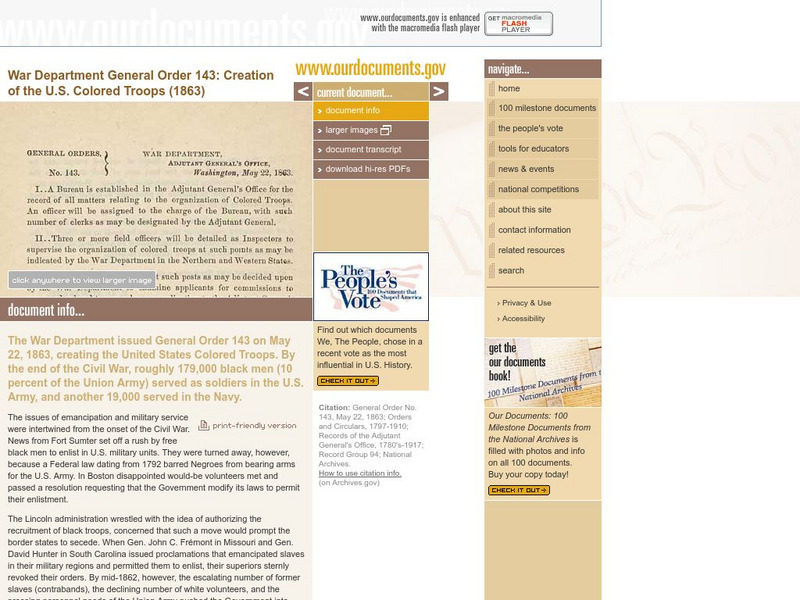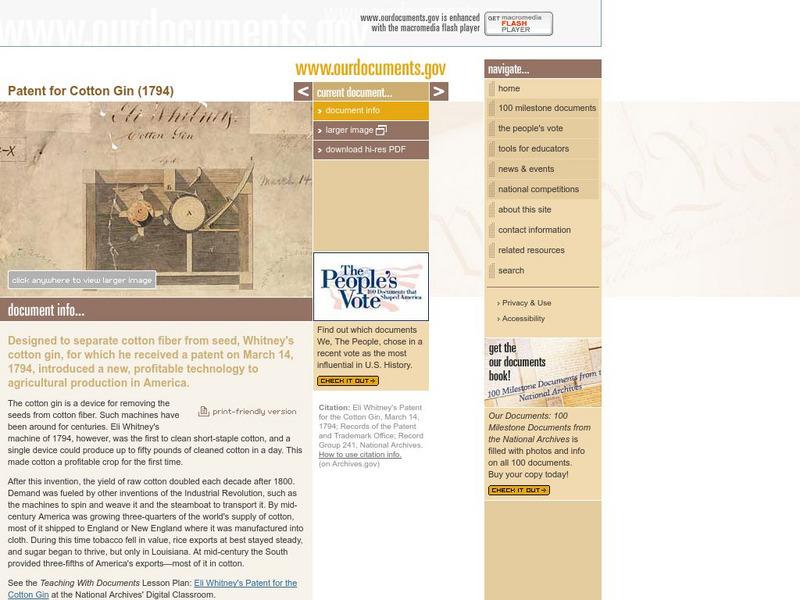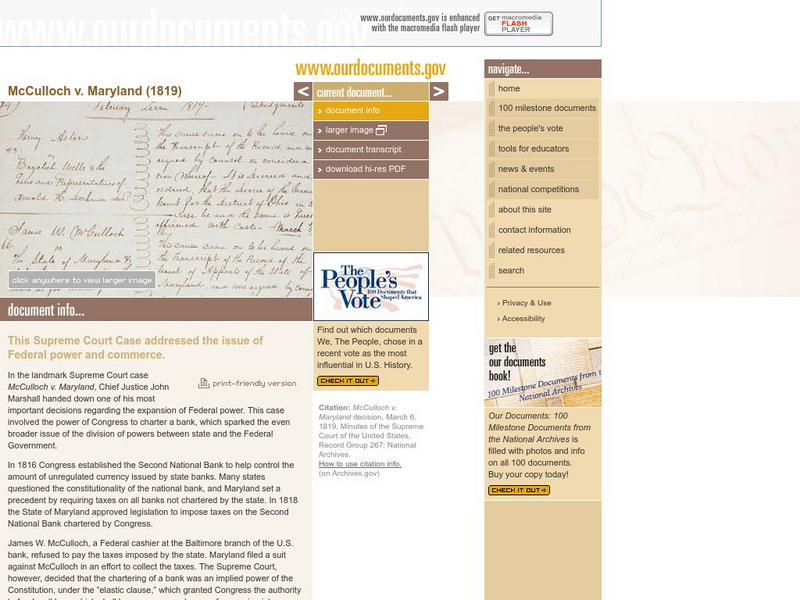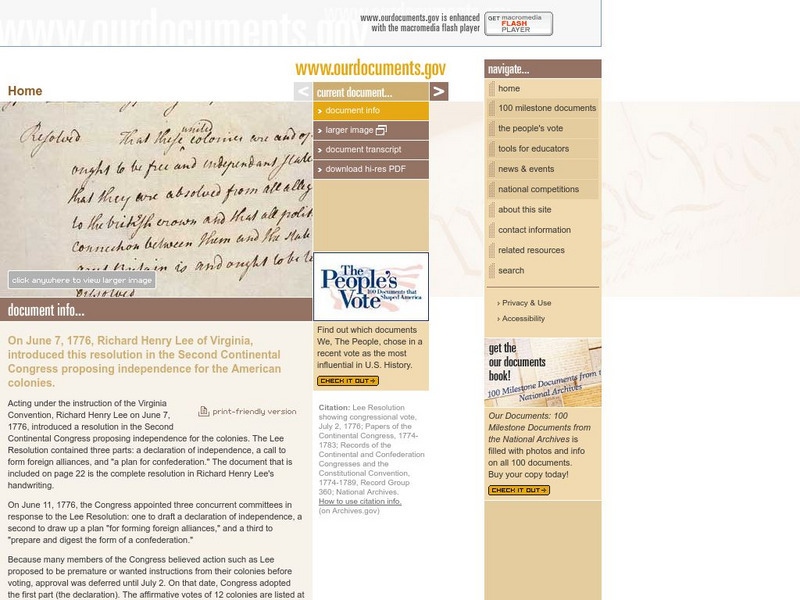US National Archives
Our Documents: 13th Amendment to the u.s. Constitution: Abolition of Slavery
Take a look at an image of the constitutional amendment that put an end to slavery in the United States. Interactive image is accompanied by an overview of the amendment's inception and adoption, as well as document transcript.
US National Archives
Our Documents: Surrender of the Army of Northern Virginia (1865)
The document outlining the terms of surrender, agreed upon by Generals Ulysses S. Grant and Robert E. Lee, which ended the Civil War in 1865. Interactive image accompanied by background information and transcript.
US National Archives
Our Documents: War Dept General Order 143: Creation of Us Colored Troops (1863)
Original document that permitted the recruitment of black troops during the Civil War. Read about events and issues leading up to and following the 1863 establishment of the Bureau of Colored Troops.
US National Archives
Our Documents: Emancipation Proclamation (1863)
Image of handwritten copy of Lincoln's Emancipation Proclamation, accompanied by an explanation of the speech's purpose, impact, and role in American history.
US National Archives
Our Documents: Morrill Act (1862)
Primary document (and transcription) of Morrill Act, which provided land to states to use in the establishment of agricultural colleges.
US National Archives
Our Documents: Homestead Act (1862)
Original text (and transcription) of the 1862 Homestead Act, which granted land for a five-year residence for minimal fees. Accompanied by an overview of the act, including how it both helped and hindered farmers.
US National Archives
Our Documents: Dred Scott v. Sanford (1857)
Learn about the Dred Scott decision and why it changed the course of American history even though many now consider it the worst opinion ever rendered by the U.S. Supreme Court. Includes full-page scans of the decision, a transcription,...
US National Archives
Our Documents: Jefferson's Secret Message to Congress
Read President Thomas Jefferson's secret message to Congress through which he asked for money to explore the West. The 1803 document is accompanied by transcription and overview of its content.
US National Archives
Our Documents: Patent for Cotton Gin (1794)
Interactive image of Eli Whitney's plans for the cotton gin, accompanied by an explanation of the cotton gin's purpose and significance in relation to the Industrial Revolution.
US National Archives
Our Documents: Aerial Photograph of Missiles in Cuba
This site contains information on the Soviet missile bases in Cuba that were caught by aerial photographs. The site also allows you to view a close-up of one of the photographs.
US National Archives
Our Documents: Mc Culloch v. Maryland
Learn about this landmark Supreme Court case on the issues of federal power and commerce. Provides an image of a document from the case files and a transcript of the opinion delivered in 1819 by Chief Justice John Marshall.
US National Archives
Our Documents: Lee Resolution (1776)
The Our Documents group offers information on Richard Henry Lee's 1776 resolution proposing colonial independence. See the original document, read the transcript, and download a printer-friendly version.
US National Archives
Our Documents: Treaty of Alliance With France (1778)
Use this site to learn the history of the 1778 U.S. defensive Treaty of Alliance with France, view images of the document, read a transcript, or download a printer-friendly version.
US National Archives
Our Documents: Great Seal of the United States (1782)
View and learn about the original design of the great seal, including the history of its creation and its current uses.
US National Archives
Our Documents: Social Security Act (1935)
Explanation of the importance of the Social Security Act and how it differed from social security initiatives of European countries. Includes a facsimile of the act's official entry in the Enrolled Acts and Regulations of Congress, along...
US National Archives
Our Documents: National Labor Relations Act (1935)
Explore the original document that established the National Labor Relations Board written in 1935. Also known as the Wagner Act, its intention was to give employees the right to form unions and to engage in collective bargaining.

















